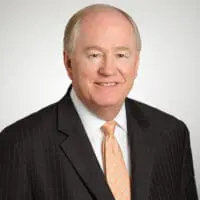Employee Benefits
COVID-19 Comes to an End(emic): Preparing Group Health Plans for Anticipated End of COVID-19 Emergencies
The Biden Administration recently announced its plan to end both the National Emergency and Public Health Emergency for COVID-19 (together, the “COVID-19 Emergencies”) on May 11, 2023.
The end of the COVID-19 Emergencies will trigger (immediately or within specified timeframes) the end of various COVID-19 requirements and related relief for group health plans. As further detailed in our SW Benefits Update, “2022 End of Year Plan Sponsor “To Do” List (Part 1) Health and Welfare,” the expiring COVID-19 rules include:
- Required coverage of COVID-19 testing (including over-the-counter testing) without cost-sharing, pursuant to the Families First Coronavirus Response Act (“FFCRA”) and subsequent guidance.
- Required coverage of COVID-19 vaccinations without cost-sharing from out-of-network providers, pursuant to the “Coronavirus Aid, Relief, and Economic Security Act” (the “CARES Act”) and subsequent guidance.
- Although unclear, possibly relief permitting high deductible health plans (“HDHPs”) to cover testing and treatment of COVID-19 prior to the satisfaction of the minimum deductible without jeopardizing the plan’s HDHP status.[1]
- Required deadline extensions benefiting plan participants with respect to COBRA, HIPAA special enrollment, and ERISA claims and appeals deadlines.
- Relief benefiting plans and plan fiduciaries by providing additional time to provide certain notices, disclosures, and documents, such as summary plan descriptions (“SPDs”), summaries of material modification (“SMMs”), and summaries of benefits and coverage (“SBCs”).
- Limited COVID-related enforcement relief related to mental health parity rules.
- Relief permitting excepted benefit employee assistance programs (“EAPs”) and on-site medical clinics to provide benefits for COVID-19 diagnosis, testing, and vaccinations without impacting excepted benefit status.
In anticipation of the end of the COVID-19 Emergencies, group health plan sponsors should consider how to prepare for the special rules to lapse. The appropriate next steps will likely vary from plan-to-plan, depending on how plans have addressed the rules to date and how plans intend to approach COVID-19 coverage moving forward. For example, next steps might include:
- Evaluating which COVID-related benefits should continue or terminate.
- Preparing any necessary plan amendment and/or SMM.
- Notifying participants at least 60 days in advance of any material plan modifications that would affect the content of the plan’s SBC, keeping in mind that FAQs Part 43 relieves certain plans from the SBC advance notice rule with respect to the reversal of certain COVID-related changes, if the plan previously provided notice of the duration of the coverage or reduced cost-sharing or the plan otherwise provides such notice within a “reasonable” time in advance of the reversal.
- Contacting the plan’s third party administrators and COBRA administrator to ensure that they are prepared to transition to pre-COVID-19 COBRA, HIPAA special enrollment, and ERISA claims and appeals deadlines.
- Preparing any other necessary participant communications. With respect to the participant COVID-19 deadline extensions, EBSA Disaster Relief Notice 2021-01 specifically indicates that plan administrators or fiduciaries should “consider affirmatively sending a notice regarding the end of the relief period.”
- Updating written plan procedures and administrative practices as needed.
More information about the end of the COVID-19 Emergencies can be found in a Statement released on January 30, 2023, a Fact Sheet released on February 9, 2023, and a Notice released on February 10, 2023.
[1] The IRS provided this HDHP relief in IRS Notice 2020-15. Notice 2020-15 suggests the relief is effective “until further guidance is issued,” but also indicates that the relief is issued “[d]ue to the unprecedented public health emergency posed by COVID-19.” Additional guidance is welcome to clarify whether the relief extends beyond the COVID-19 Public Health Emergency.










